My passion for Elsa Peretti you already know, her designs and overall state of mind and being. But her houses…. her houses are my new obsession. Full of details, live and art. I will get start with her NYC apartment and them move on to her retreats, for me the best part.
NYC
The NYC apartment, that she took over from Halston, was featured in Vogue in 1976.

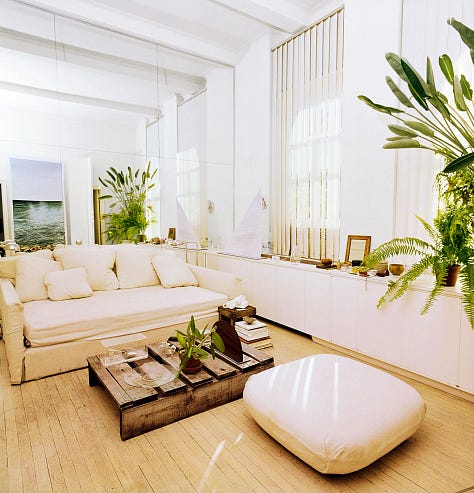
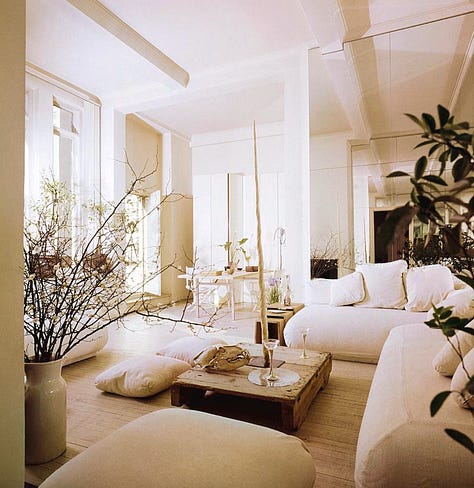
The apartment featured “bare bleached white floors, mirrored walls, lemon trees, banquettes draped in white Haitian cotton, white director’s chairs, and a work table” — a versatile piece used for both dining and makeup.
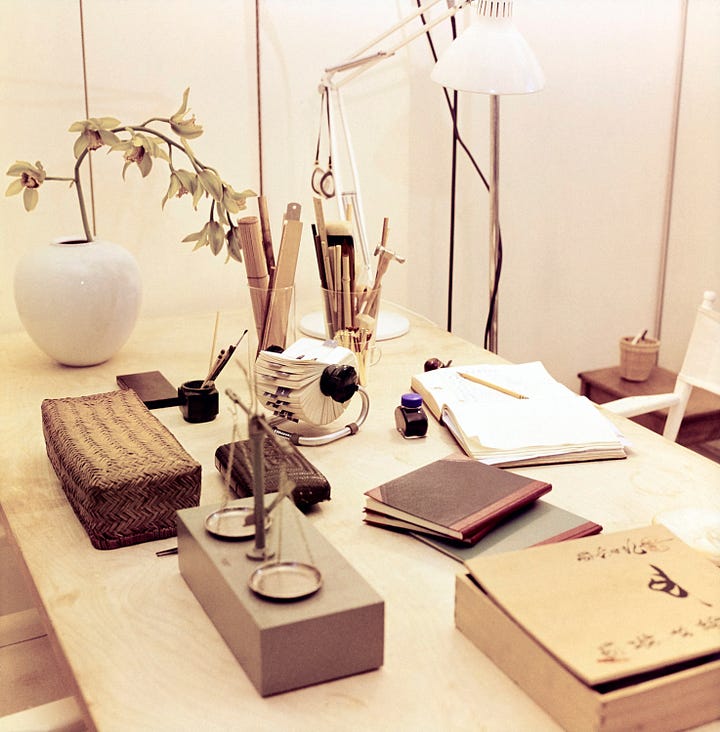

Applying her makeup — a routine that, according to the interview, included foundation, Roger & Gallet face powder, blush, a brown eye pencil, and mascara.
Picture on the right: the famous teardrop bottle Elsa designed to house the first women’s fragrance by Halston; The two other perfume bottles — both Joy by Jean Patou — reveal much about Elsa’s refined tastes.
Spain
Even though she was a rising star in New York, Elsa discovered Sant Martí Vell in Catalonia in 1968, where she bought a small house overlooking the town square. “In Sant Martí Vell I find the strength to continue my work, the peace I need, the inspiration for my forms,” Peretti once said. From there, she had bought and renovated 27 houses and farmhouses.
Peretti rented most of the houses to friends, artists, and local creatives, while from the 1980s she lived permanently between four of them — Casa Pequeña (first house she purchased) , Casa Grande, Can Noves, and Casa Caballo — moving between them with the seasons, her mood, or visiting guests. Wandering through the many spaces of her four homes — some connected by a network of underground tunnels.
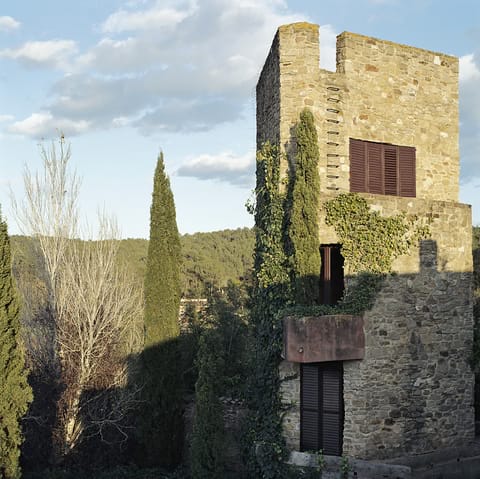
Until her death, Peretti was constantly editing and curating her possessions; since then, every room has remained untouched. The spaces vary from small and intimate to large and grandiose.
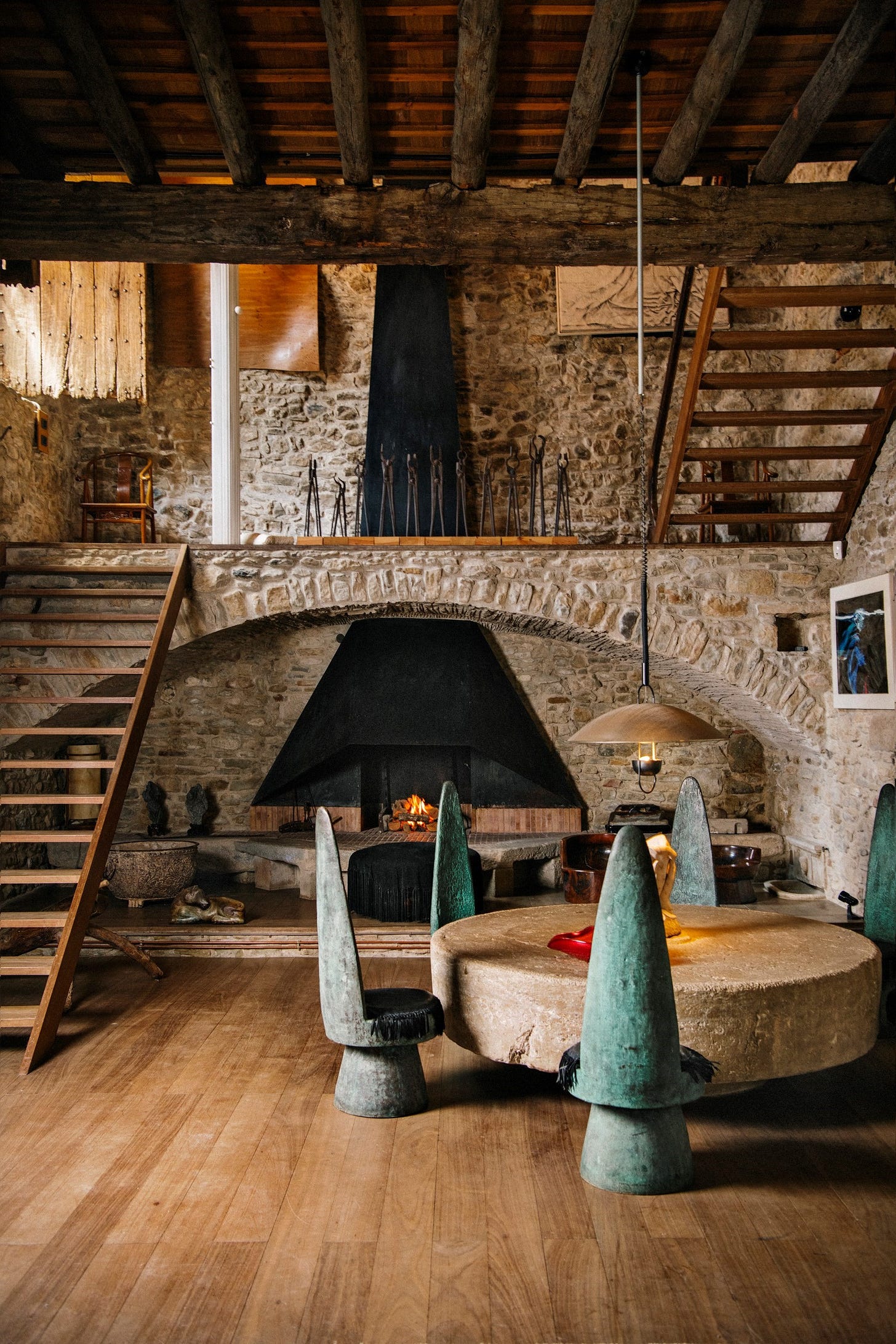
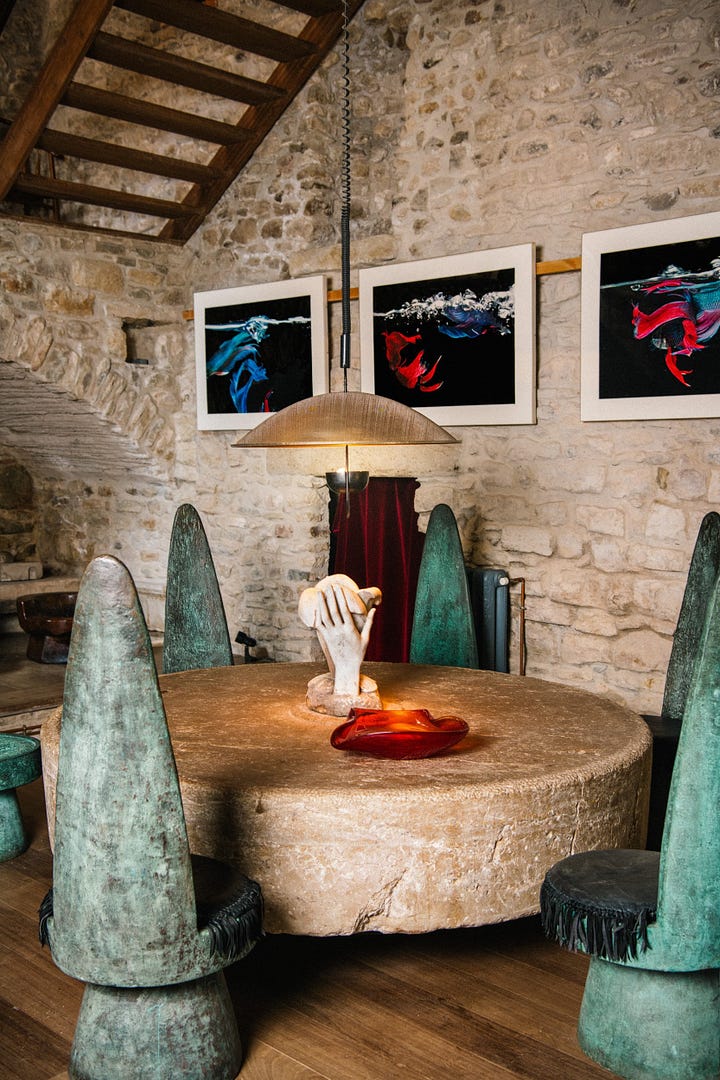
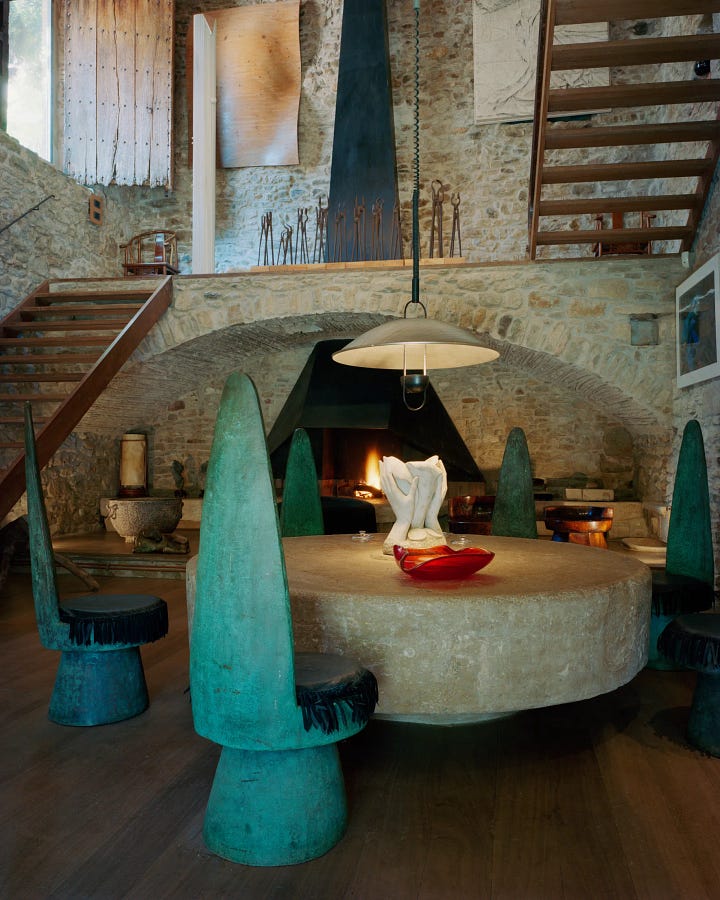
Peretti was an obsessive collector and supporter of local craft, commissioning furniture and sculpture from Spanish artists while mixing art from Africa, Japan and China in a heady combination of genres and styles.
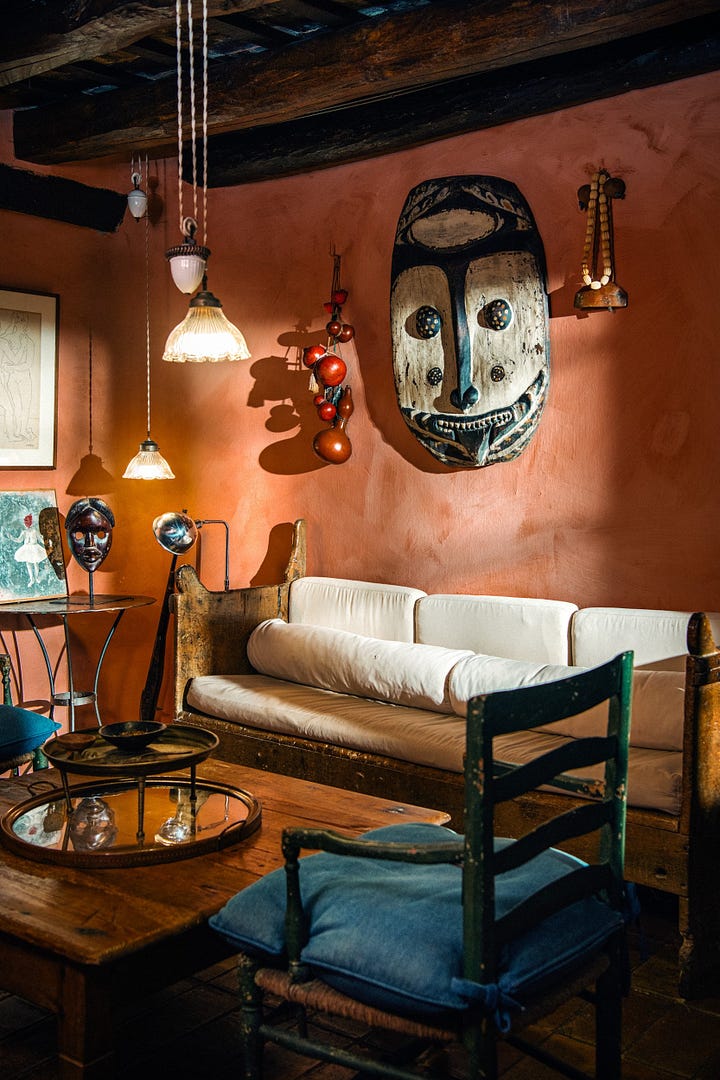

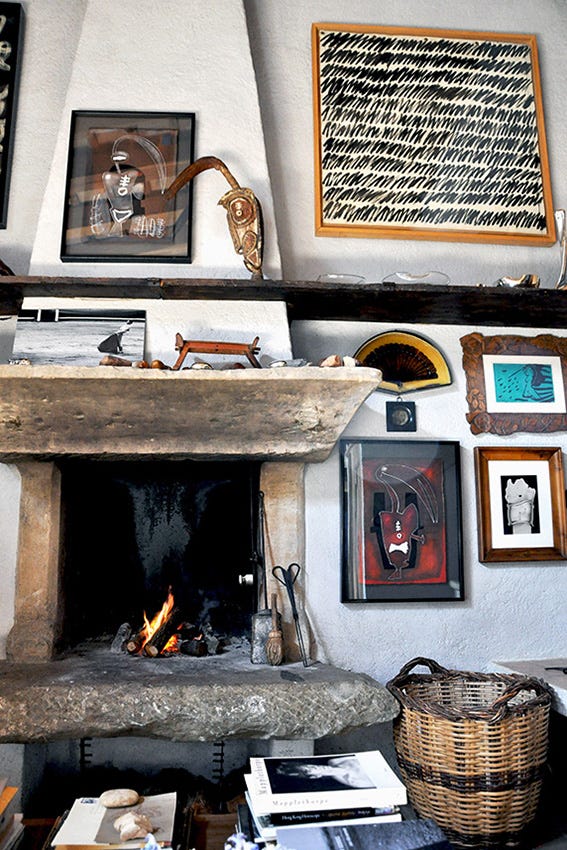
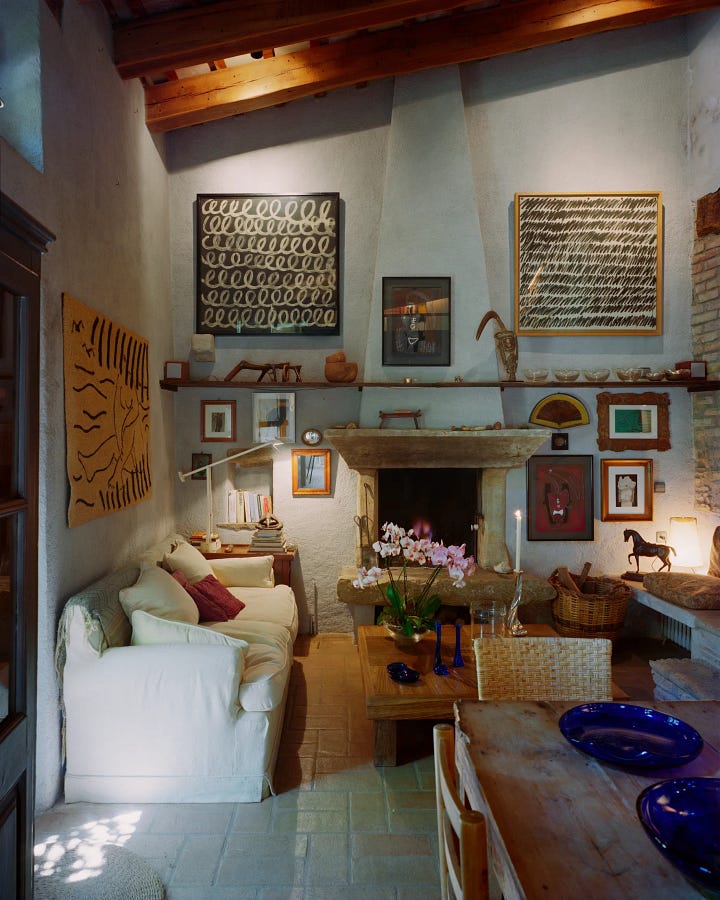
Attention to every detail mattered. The walls are painted with crushed lapis lazuli mixed with chalk to achieve a specific shade Peretti desired, and this distinctive blue can be found throughout the houses.
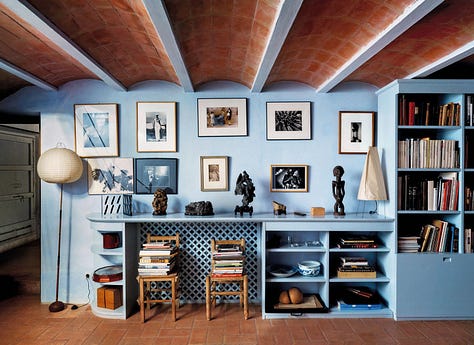
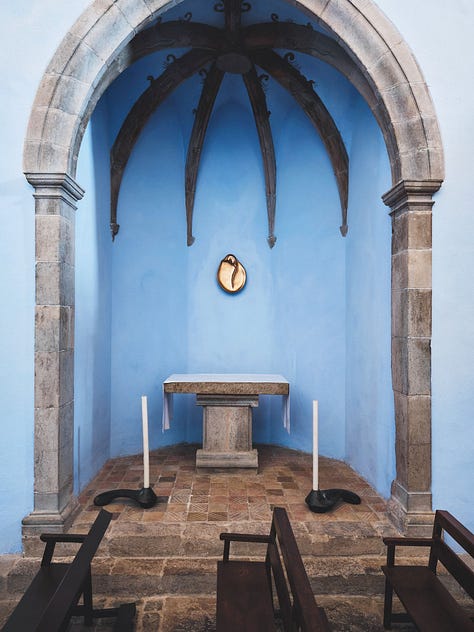
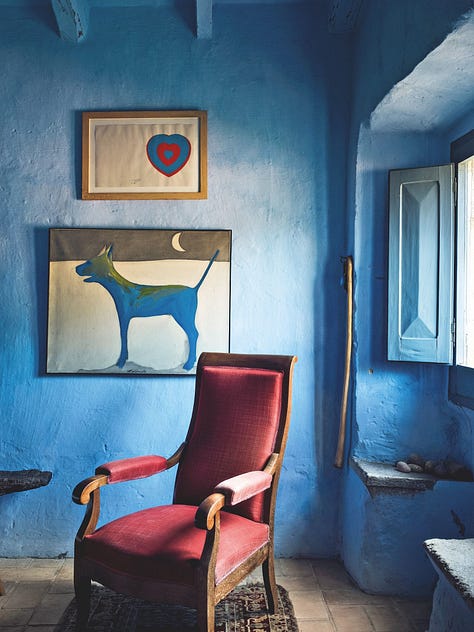
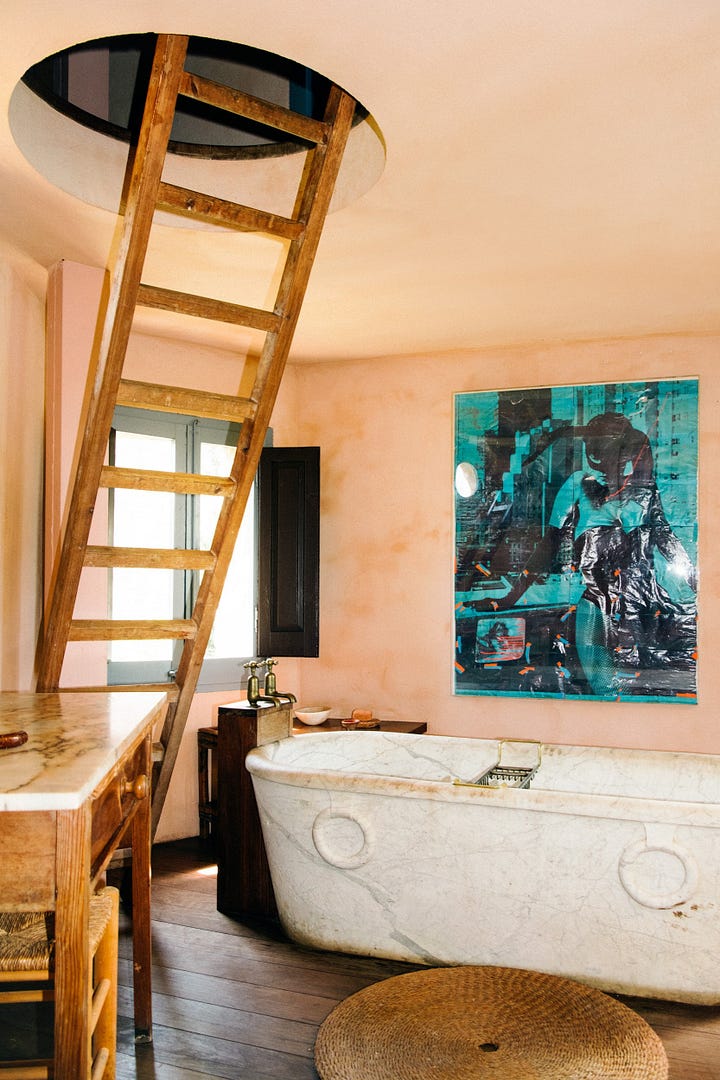
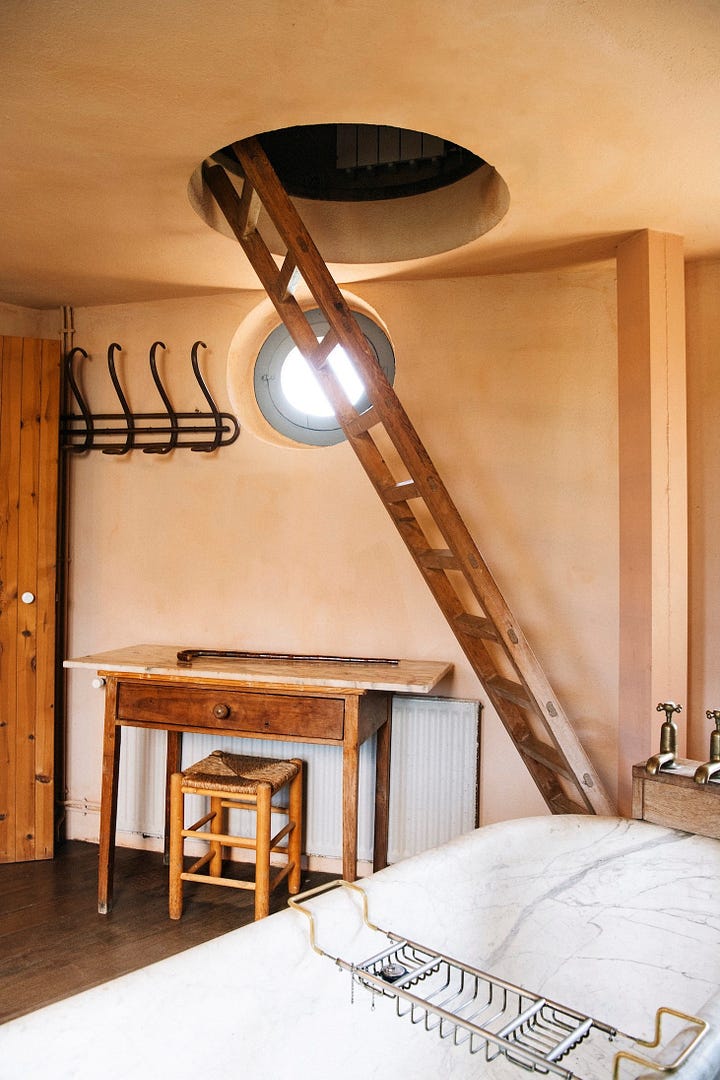
Other rooms have been allowed to function purely as aesthetic spaces. Some areas are wonderfully minimalist, almost monastic in their simplicity — Peretti, deeply influenced by Japan, was inspired by the concept of “shibui,” where stone and wood are left unembellished to highlight their inherent beauty. This raw, rustic quality runs through every property, harmonizing with her collection of art and artifacts. (Source)
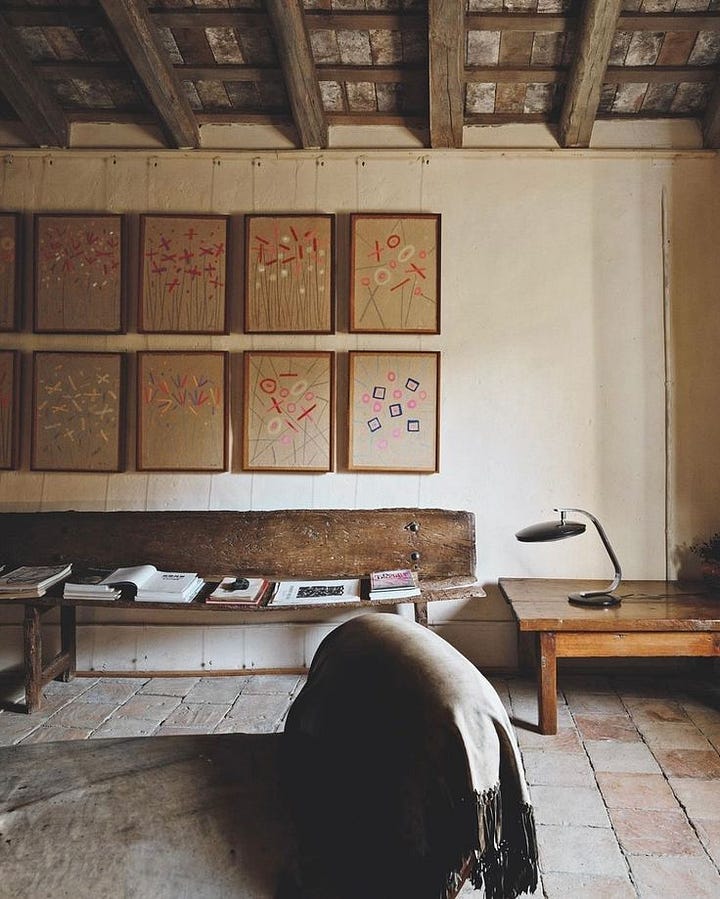
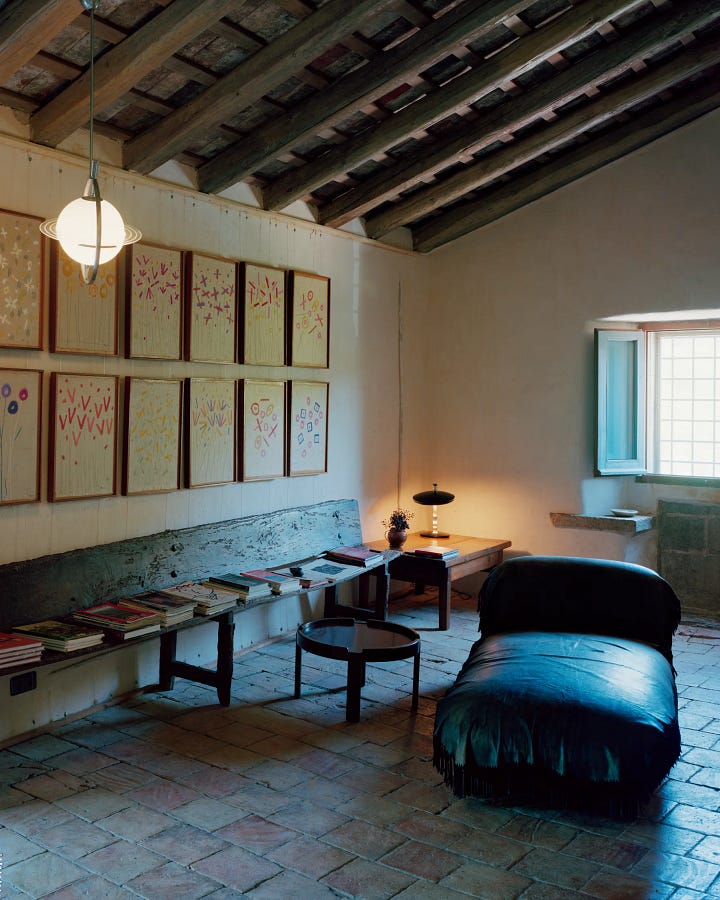

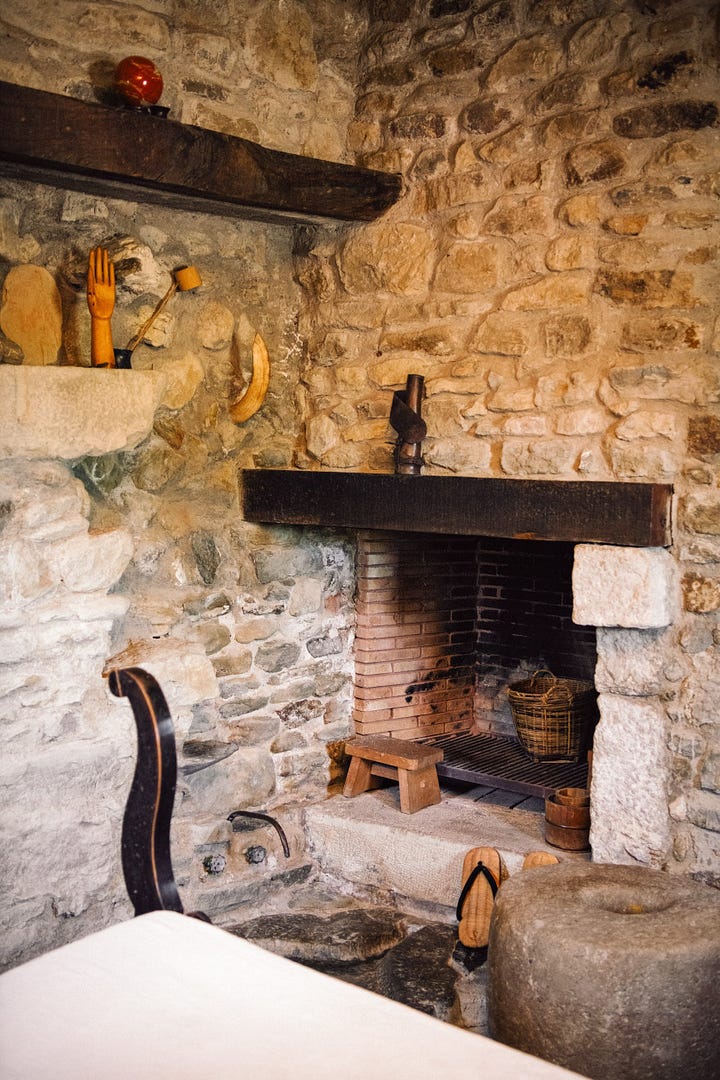
Everything here was a creative refuge. There was always music playing in the house, be it flamenco or jazz. Diptyque candles and smoke filled the house with intense light and scents.


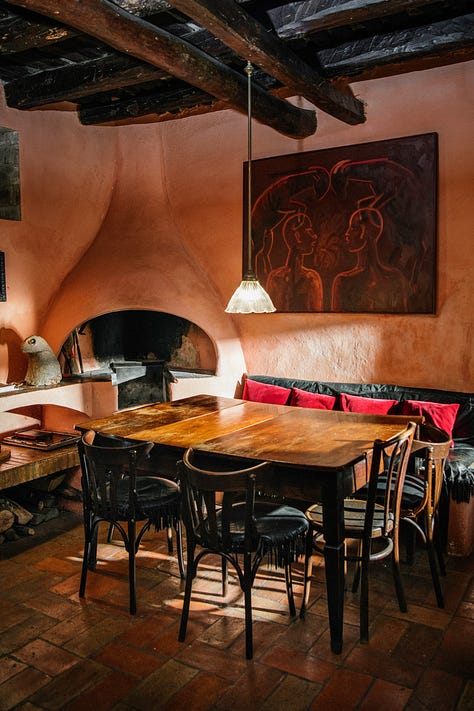

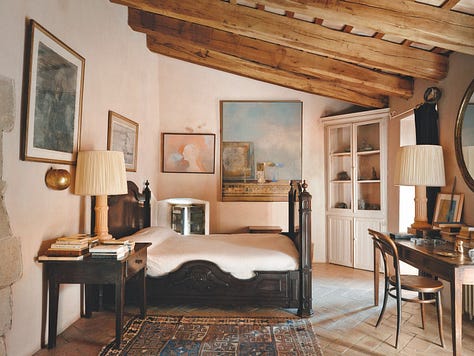
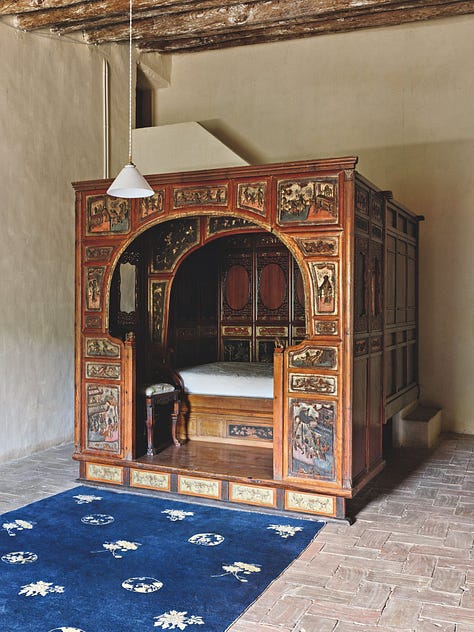

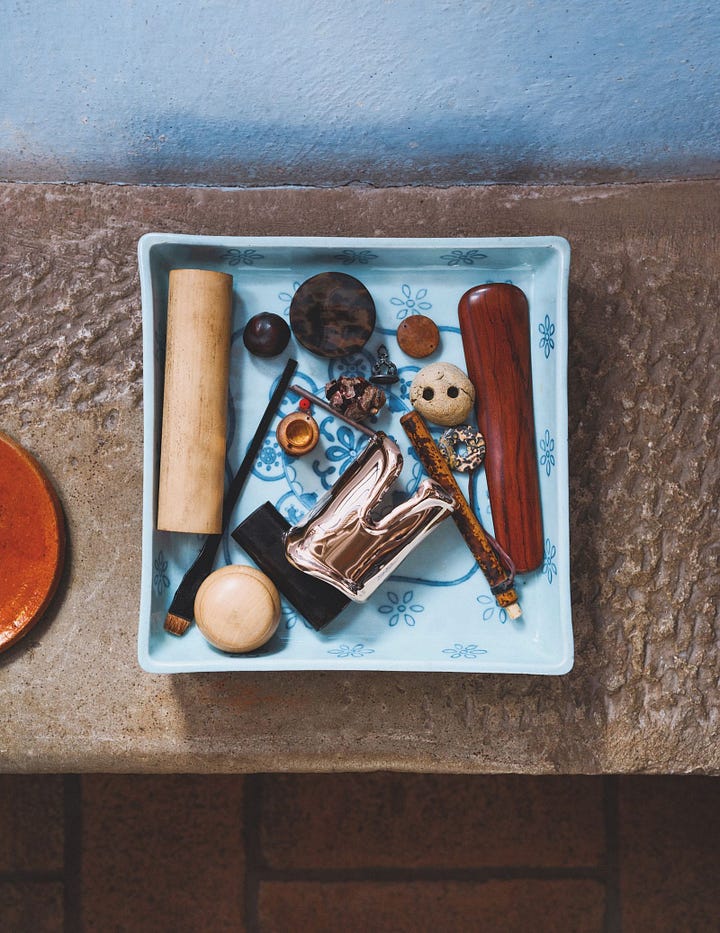

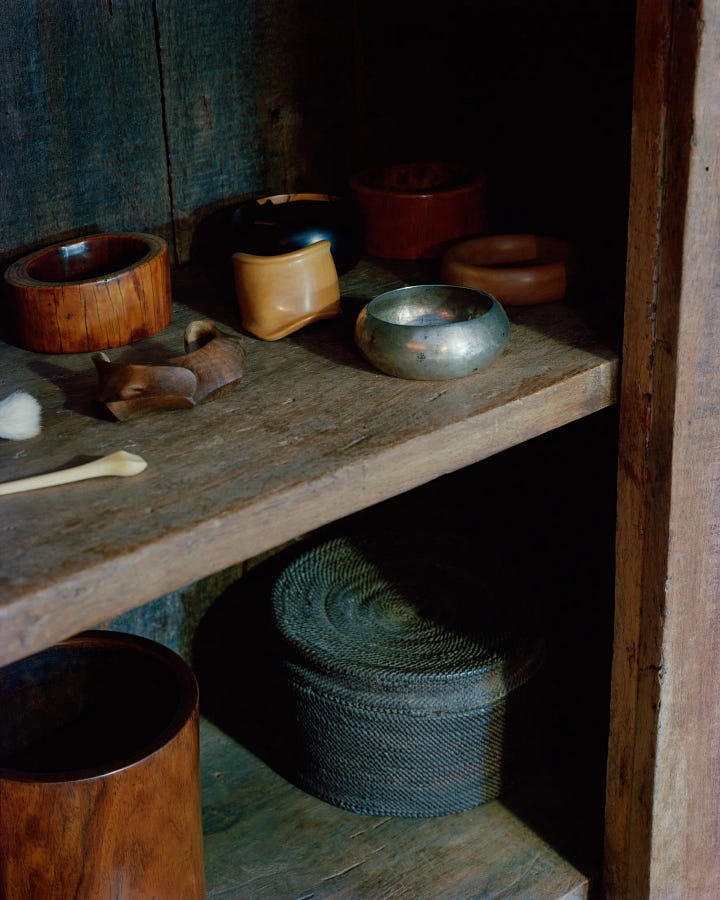
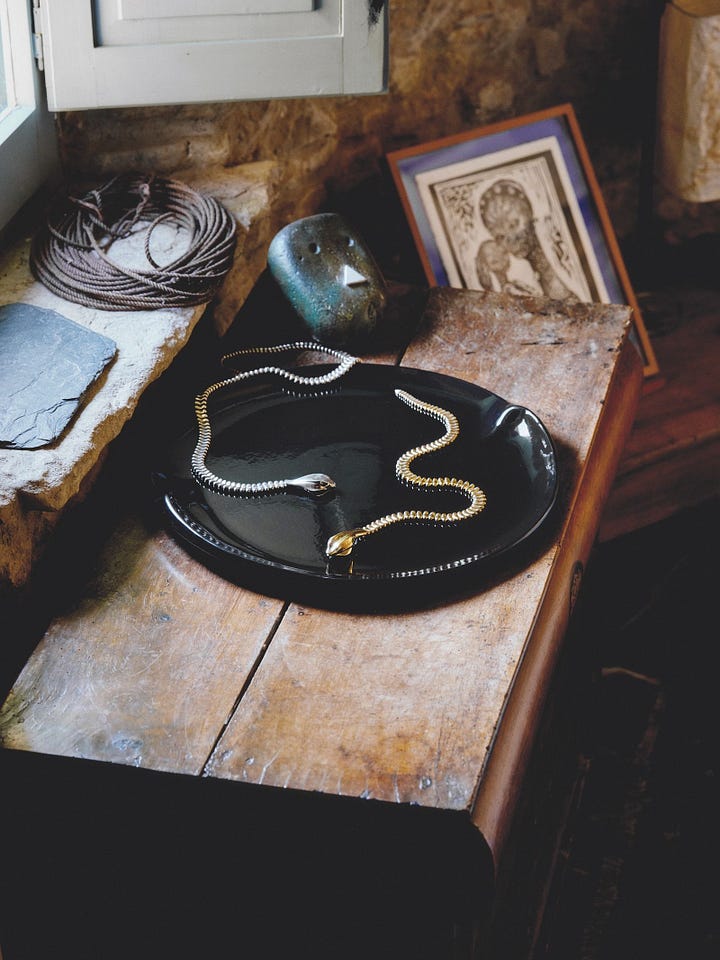
Barcelona
Peretti purchased the apartment on Carrer del Bruc in the late 1980s. It was in this space, cigarette in hand, that she engaged with the wider world, while Sant Martí Vell remained her private refuge. At the kitchen table in Barcelona, she conducted business — meeting with Tiffany executives, the skilled artisans who brought her jewelry designs to life, journalists and photographers drawn by her early fame, and the Catalan artists whose work she collected and championed.
The Barcelona apartment is set in a typical middle-class building from the 1920s, located in a solidly middle-class neighborhood — a visual language that Peretti embraced. It feels like a familiar corner of Gaudí’s universe. She sourced most of her furniture from local second-hand markets, such as Els Encants in Barcelona. Peretti left the original stained-glass windows with their floral engravings, the decorative plaster moldings, and the ever-present mosaic tiles untouched.
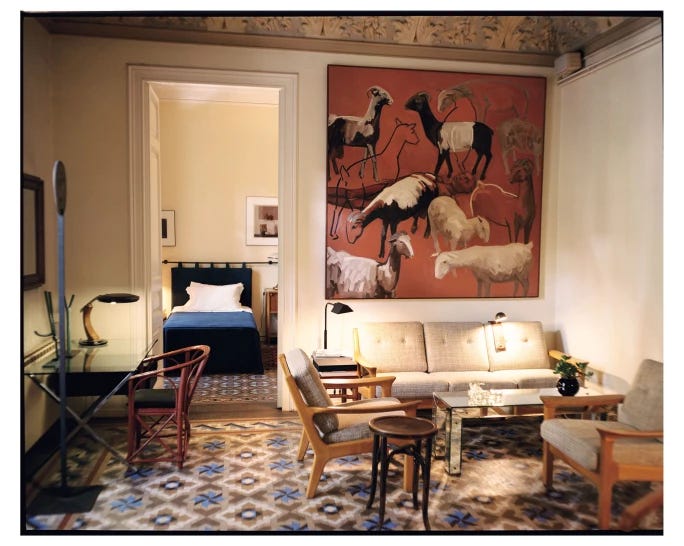
Peretti ended up owning 85 Llimós pieces.


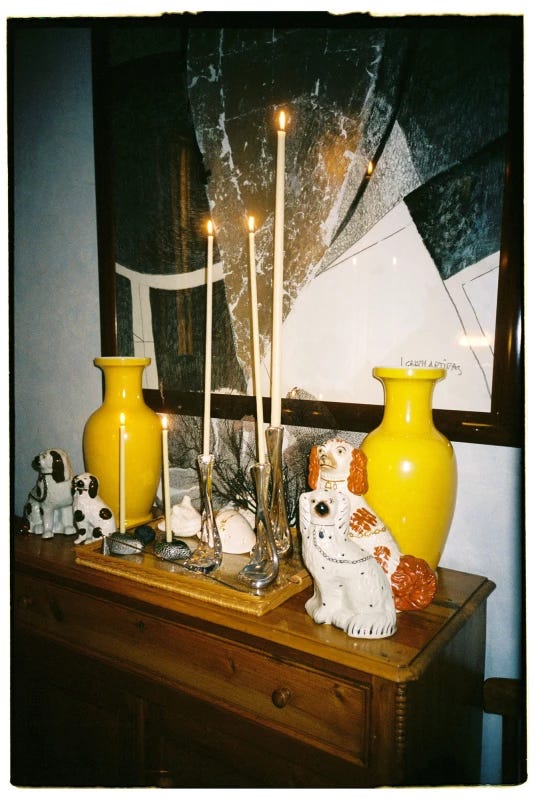

Italy
She owned two houses in Italy, more precisely in the Tuscan coast.
La Torre was once a ruined watchtower perched on the steep, craggy cliffs of southern Tuscany, built by Spanish invaders in the 16th century as a military lookout between the Tuscan archipelago and the island of Corsica. Its remote location appealed to Peretti as a sanctuary from curious tourists. She turned to a friend and master of atmosphere, Milanese architect Renzo Mongiardino to renovate it.

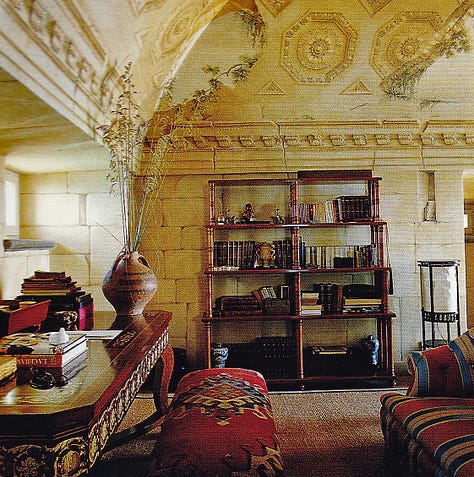
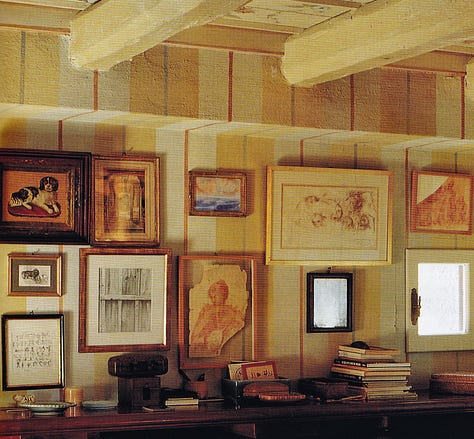


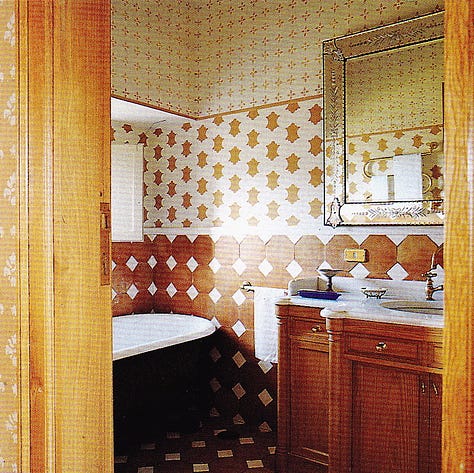
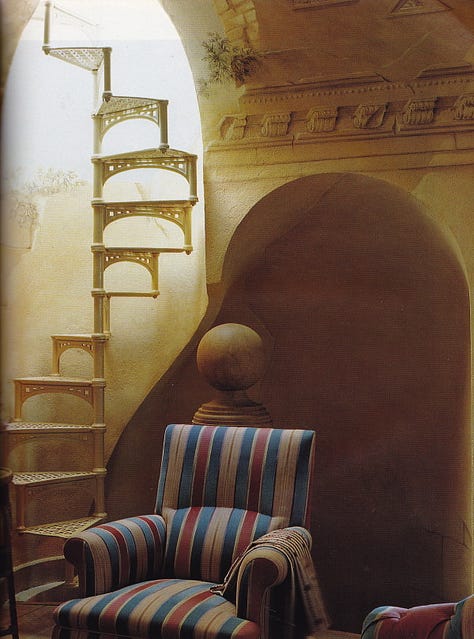
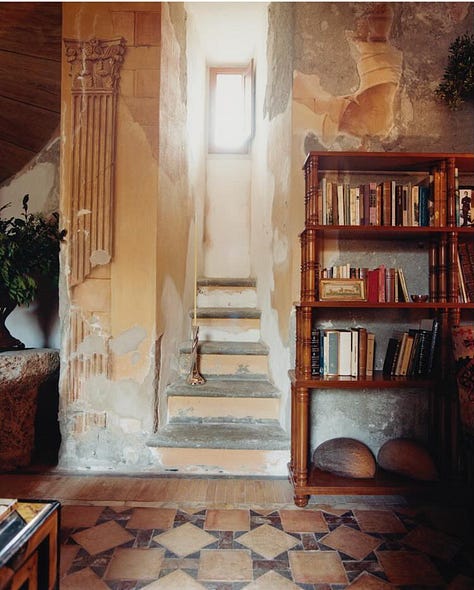
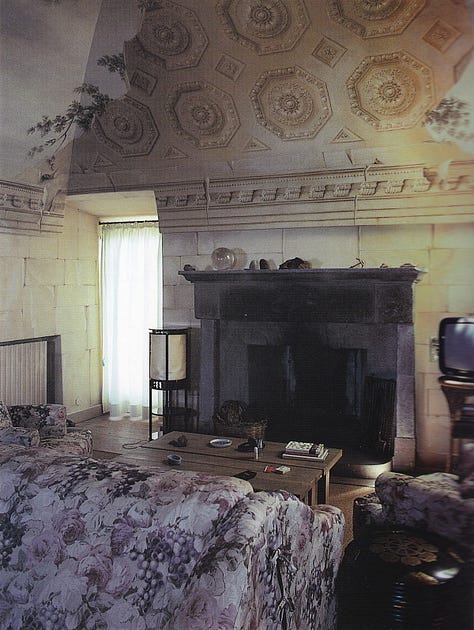
There’s a book created by Apartamento with imagery of her Italian interiors, Here!
These houses were never meant as showplaces. They were the intimate art Peretti made for herself and her friends.
So much inspiration, loved creating this article and I hope you also got inspired too!
xx






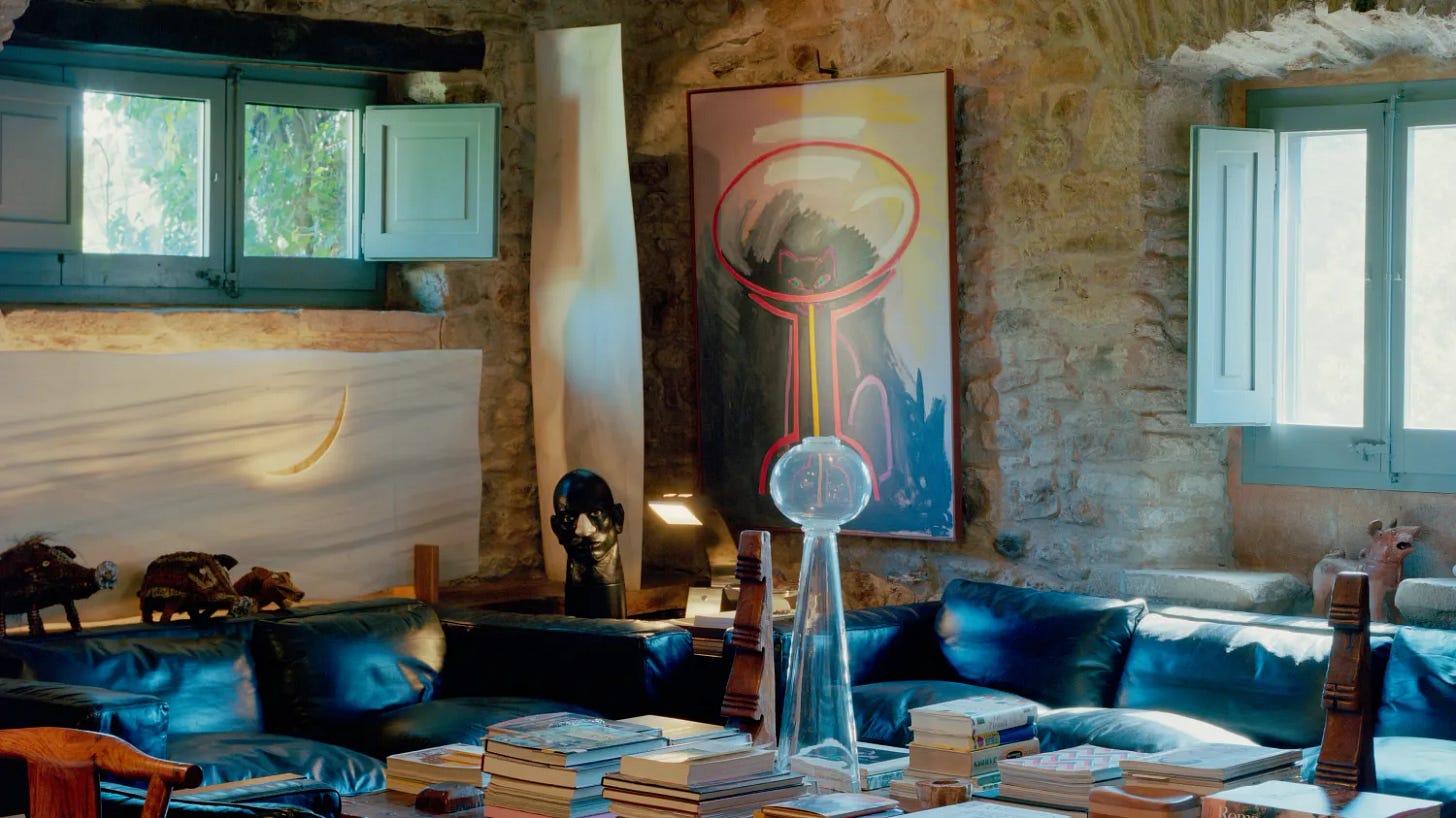


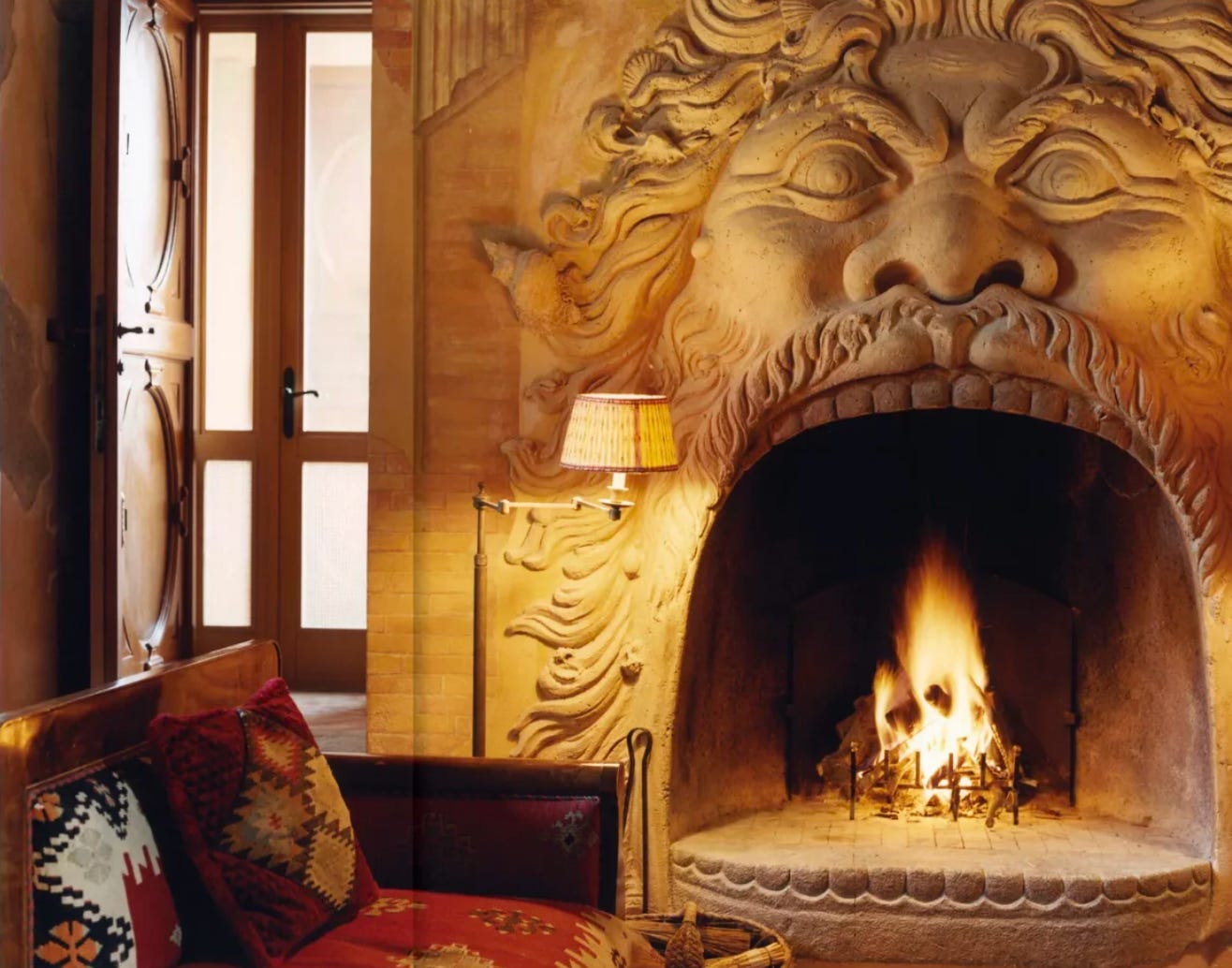
A fantastic post! Congrats! ❤️❤️❤️🚀
Absolutely stunning